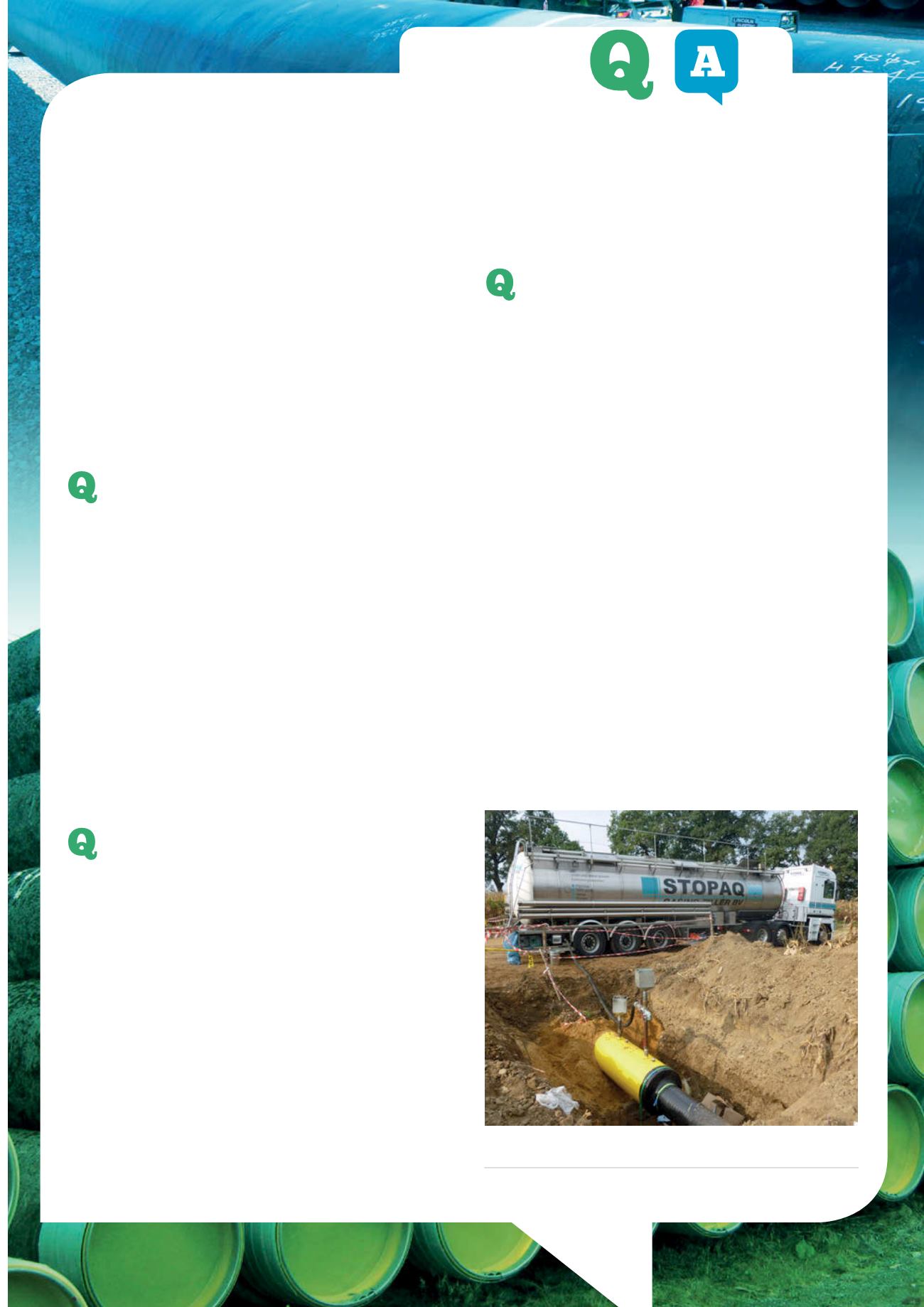
Coatings
&
These five technologies, which had already earned their
own reputation independently within the market, are Polyken
Tape Solutions, Powercrete Liquid Solutions, Stopaq Self
Healing Corrosion and Sealant Systems, Anodeflex Cathodic
Protection and Covalence Heat Shrinkable Products. In
addition, new brands – Blockr, EasyQote, Synergyq and
Sealtaq – are being introduced, which will make it possible
to fulfil the needs of many more (and new) markets for our
solutions and innovations.
It is precisely the complementary strength of our
specialisms that enables us to speed in with a specific,
tailor-made solution for any challenge, in any infrastructure,
anywhere in the world. Above or underwater, from salty
marshlands to complex operations in the Arctic, Seal For Life
Industries will prove our principle that ‘1 + 1 = 3’. By maintaining
an open line of contact between our specialist technologies,
Seal For Life can react fast and effectively, and suggest
custom-made approach for each particular project.
Specifications for pipe coating plants
For many years European countries have written
national pipeline coating specifications, e.g. Germany – DIN,
France – AFNOR, UK – BSI etc. There have also been many
company specifications, and in addition those produced by
consultancies for specific projects. Over the last few years,
there has been a definitive move to write European – CEN
and ‘World’ – ISO standards.
When the ‘Vienna Agreement’ is applied this sometimes
allows that the same document be used as a CEN and ISO
standard, hence obviating the requirement for two similar
documents. These CEN and ISO standards give every
company, large or small, the opportunity to utilise modern
pipeline coating standards.
However, these CEN and ISO standards dictate minimum
pipeline coating criteria, and can be lower in technical
requirements than a corresponding company standard, and
sometimes a national standard.
Coatings repair and rehabilitation:
inspection, repair methods, testing
The application of CP can also be a negative influence on the
quality of the external coating. Applying too much CP current
onto the pipe may lead to overprotection of the steel. This
results in the production of hydrogen gas at the steel surface.
With thin layer external coatings, such as liquid epoxies and
FBE, the production of hydrogen gas will result in blistering of
the coating and in time it will break down. Disbondment of
the external coating may occur around a coating defect.
The extent of disbondment is dependent on the coating
type, the adhesive properties of the primer and the resistance
of the total system to disbondment. In the space between the
steel surface and the coating, water and other contaminants
containing positive ions may accumulate. In the disbonded area,
sufficient current from the CP system cannot be applied. As a
consequence, external corrosion is likely to occur. This process
is referred to as ‘cathodic shielding’ at the disbonded areas.
SFL advices to start the selection and recommendation of
coating based on the application conditions such as ambient
temperature, access and expected extended service life.
Coating selection based on Sa 2.5 blasted is not necessary,
as newer technologies and combination of technologies
are available to rehabilitate live ‘cold’ gas pipelines without
blasting.
Which convention, conference, standards
and guidance are of most relevance to
the pipeline coatings industry?
Before one can determine what coating system to
recommend, you must establish what goal or goals are
to be achieved. There are generally four main reasons for
application of a coating system:
)
Protection of the capital investment.
)
Beautification/aesthetics.
)
Product purity.
)
Environmental protection.
Protection of the equipment is usually the first and
most obvious goal. Sometimes a particular colour and gloss
is required. In the case of tank linings, the need to provide
a surface that will maintain product purity is essential.
Increasingly, containment areas must be designed to prevent
hazardous spills from reaching the environment. One
must also determine what is an acceptable service life for
maintenance or replacement.
How does this affect coating system selection? On an
offshore platform in the North Atlantic, there may only be 10
days a year that are suitable for coating maintenance. Perhaps
the lifecycle of the facility is limited. NACE, IPLOCA, Ceocor,
Cefracor, Eurocorr, Itanks, ISO 21809-3 and 11 are relevant to
the industry as a knowledge source.
Figure 2.
Nederlandse Gasunie NV, 48 in. field joint coating of
high impact shield applied in 8 min. per joint.
47


